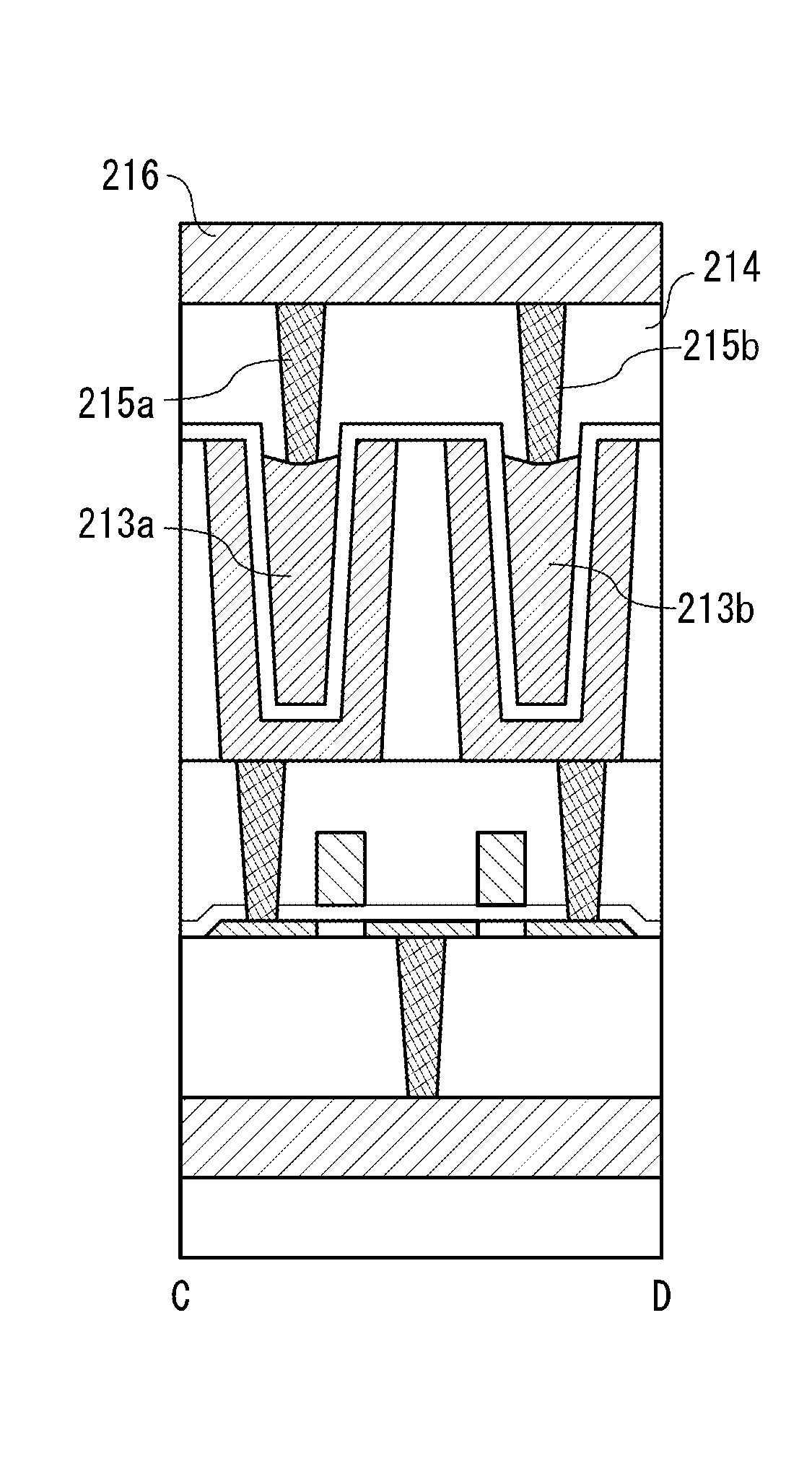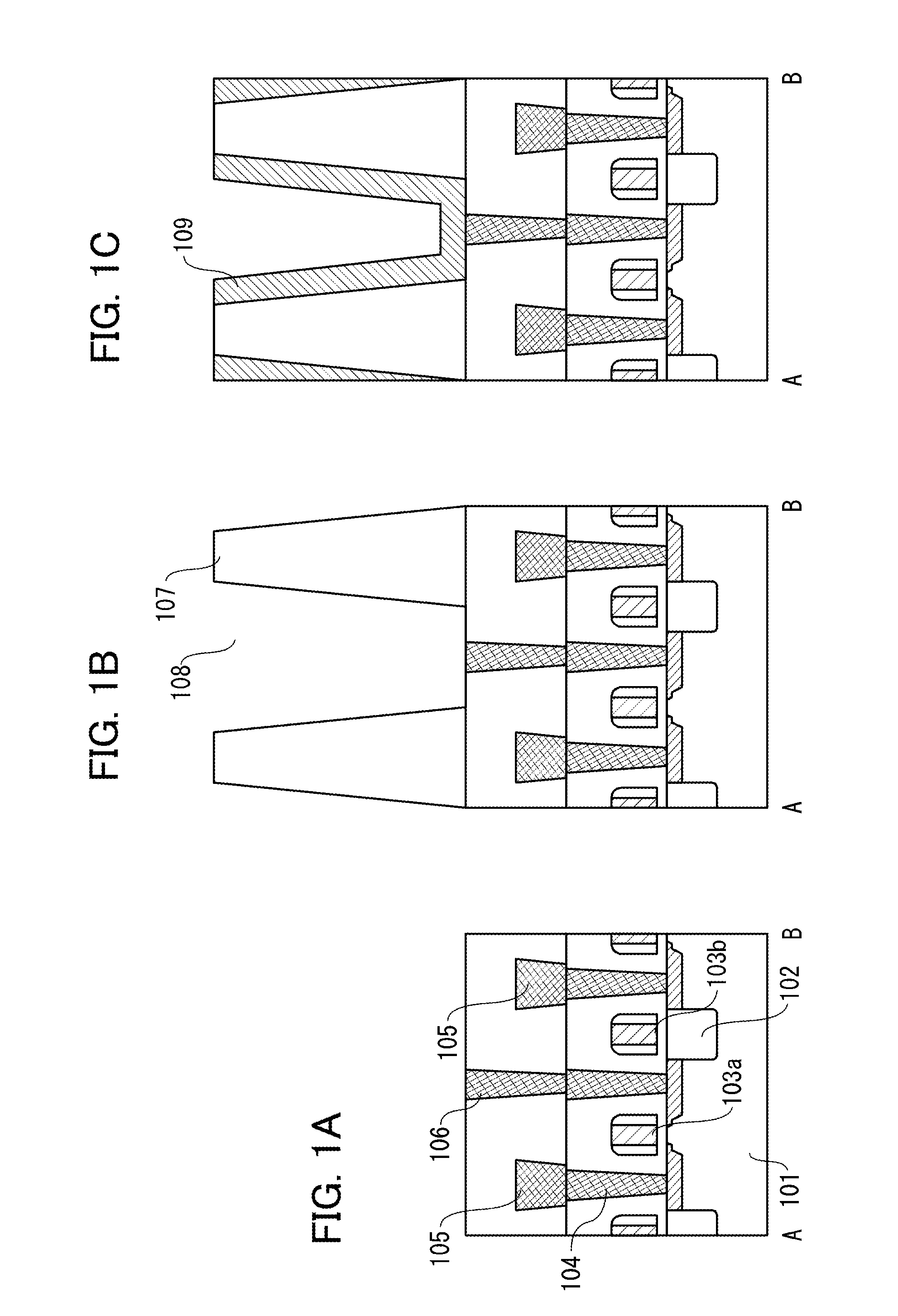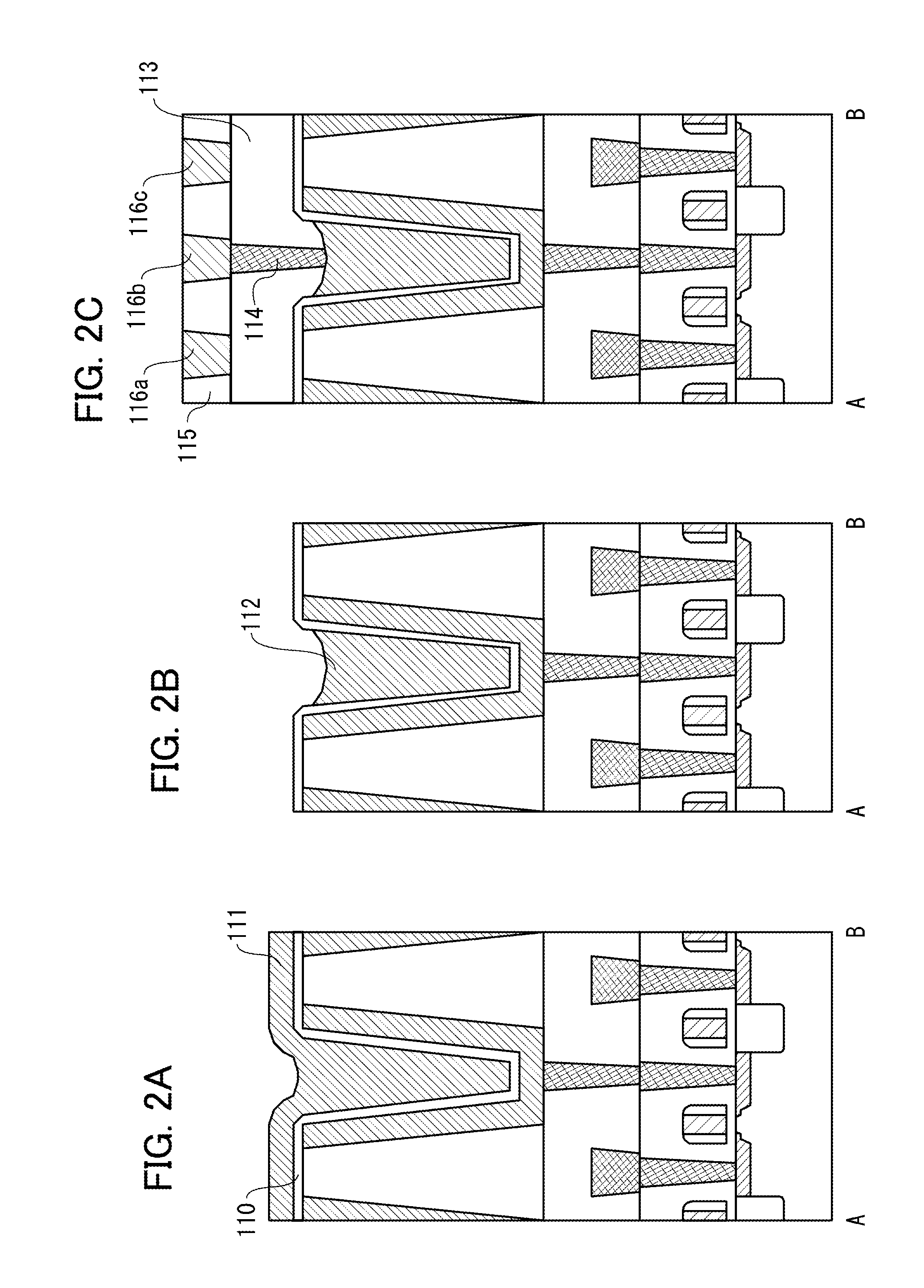Capacitor and semiconductor device including dielectric and N-type semiconductor
a semiconductor and capacitor technology, applied in capacitors, solid-state devices, transistors, etc., can solve the problems of large amount of tunnel current due to quantum effects, large energy difference, and large energy difference between high-k materials, and achieve stable chemically stable and favorable adhesion with high-k materials
- Summary
- Abstract
- Description
- Claims
- Application Information
AI Technical Summary
Benefits of technology
Problems solved by technology
Method used
Image
Examples
embodiment 1
[0059]In FIG. 1A to FIG. 1C, FIG. 2A to FIG. 2C, and FIG. 4A to FIG. 4D, an example of a manufacturing process of a semiconductor device (a DRAM having a stack-type capacitor) in this embodiment is illustrated. Note that unless otherwise specified, for materials used, methods, and the like, those of known manufacturing techniques of semiconductor integrated circuits may be referred to.
[0060]FIG. 1A to FIG. 1C and FIG. 2A to FIG. 2C are cross-sectional views of a manufacturing process of a semiconductor device in this embodiment, and FIG. 4A to FIG. 4D are schematic top views of the manufacturing process of the semiconductor device in this embodiment. In FIG. 4A to FIG. 4D, only major wirings and the like are illustrated. The cross-sections taken along the dashed-dotted line A-B in FIG. 4A to FIG. 4D correspond to the cross-sectional views of FIG. 1A to FIG. 1C and FIG. 2A to FIG. 2C.
[0061]In this embodiment, manufacturing of a so-called folded-bit-line DRAM is described. In such a f...
embodiment 2
[0078]This embodiment is illustrated in FIG. 3A to FIG. 3C and FIG. 4E and FIG. 4F. In this embodiment, an open-bit-line DRAM is manufactured using a thin film transistor. The area of a memory cell of an open-bit-line DRAM can be downsized to 6 F2 (F is a feature size) ideally, which is smaller than that of the folded-bit-line DRAM described in Embodiment 1. Hereinafter, description is given with reference to the drawings.
[FIG. 3A]
[0079]A bit line 202 is formed over a first insulator 201. Further, a second insulator 203 is formed, and a first contact plug 204 connected to the bit line 202 is formed in the second insulator 203. Further, a semiconductor layer 205 with an appropriate thickness and size, a third insulator 206 covering the semiconductor layer 205, and word lines 207a and 207b are formed. The third insulator 206 serves also as a gate insulating film of a thin film transistor.
[0080]There are no particular limitations on the semiconductor layer 205, and single crystal, poly...
embodiment 3
[0088]This embodiment is illustrated in FIGS. 5A to 5E and FIGS. 6A and 6B. In this embodiment, a signal-amplification type memory cell (see Reference 4) using two transistors is formed.
[0089]FIG. 6A is a circuit diagram of a memory cell of a normal DRAM having one transistor and one capacitor (also referred to as 1T1C DRAM) described in Embodiment 1 or Embodiment 2. In the DRAM, a writing transistor WT is turned on or off in response to a potential of a word line WL, and a charge is transferred between the bit line BL and a capacitor CS. Thus, in accordance with a parasitic capacitance of the bit line BL, the capacitance of the capacitor CS should be determined, and even if the design rule is smaller, a nearly equal capacitance is needed. For that reason, it is necessary to employ a trench-type capacitor or a stack-type capacitor, or further a high-k material.
[0090]On the contrary, a memory cell illustrated in FIG. 6B has two transistors and one capacitor. Charges stored in the cel...
PUM
| Property | Measurement | Unit |
|---|---|---|
| work function | aaaaa | aaaaa |
| work function | aaaaa | aaaaa |
| thickness | aaaaa | aaaaa |
Abstract
Description
Claims
Application Information
 Login to View More
Login to View More - R&D
- Intellectual Property
- Life Sciences
- Materials
- Tech Scout
- Unparalleled Data Quality
- Higher Quality Content
- 60% Fewer Hallucinations
Browse by: Latest US Patents, China's latest patents, Technical Efficacy Thesaurus, Application Domain, Technology Topic, Popular Technical Reports.
© 2025 PatSnap. All rights reserved.Legal|Privacy policy|Modern Slavery Act Transparency Statement|Sitemap|About US| Contact US: help@patsnap.com



